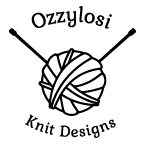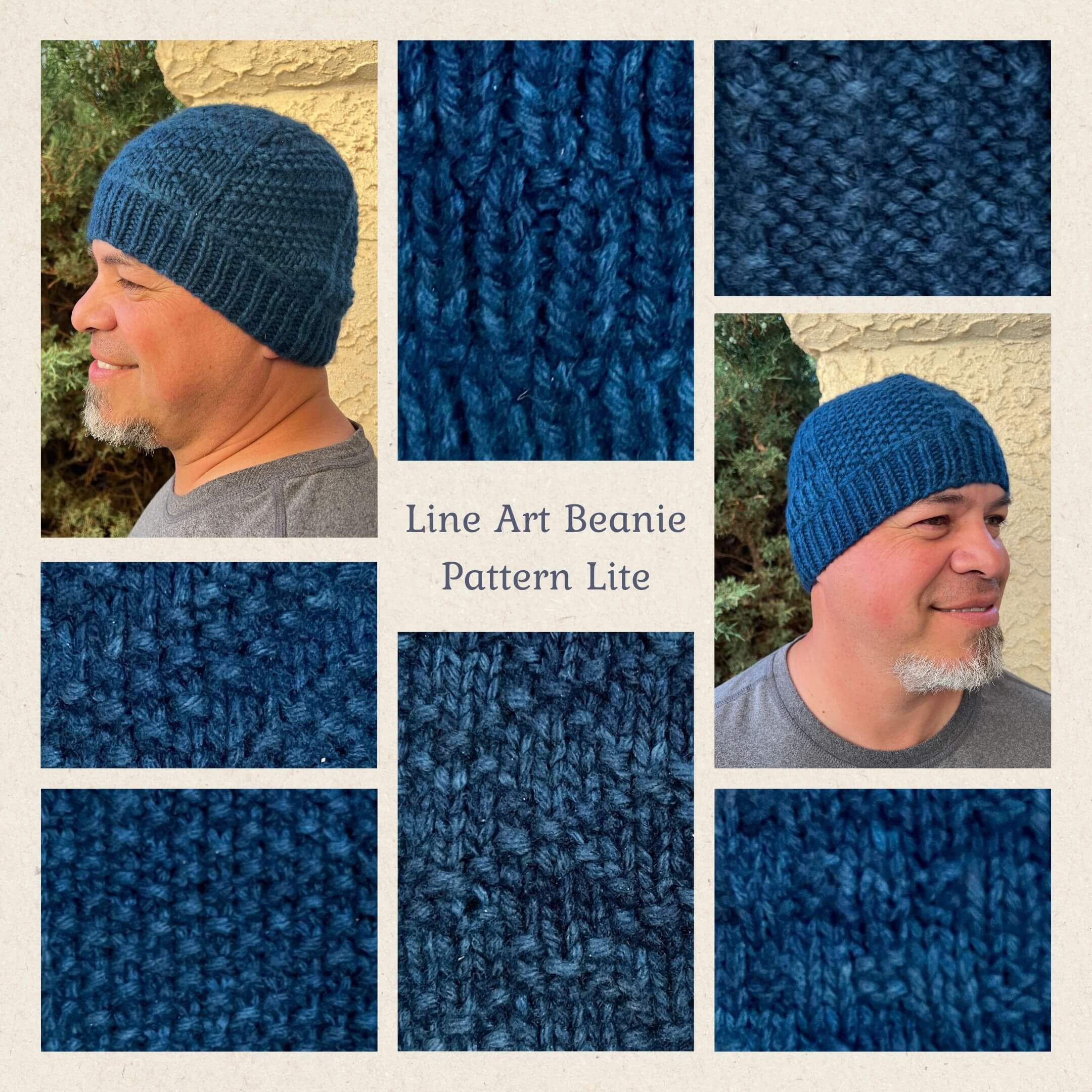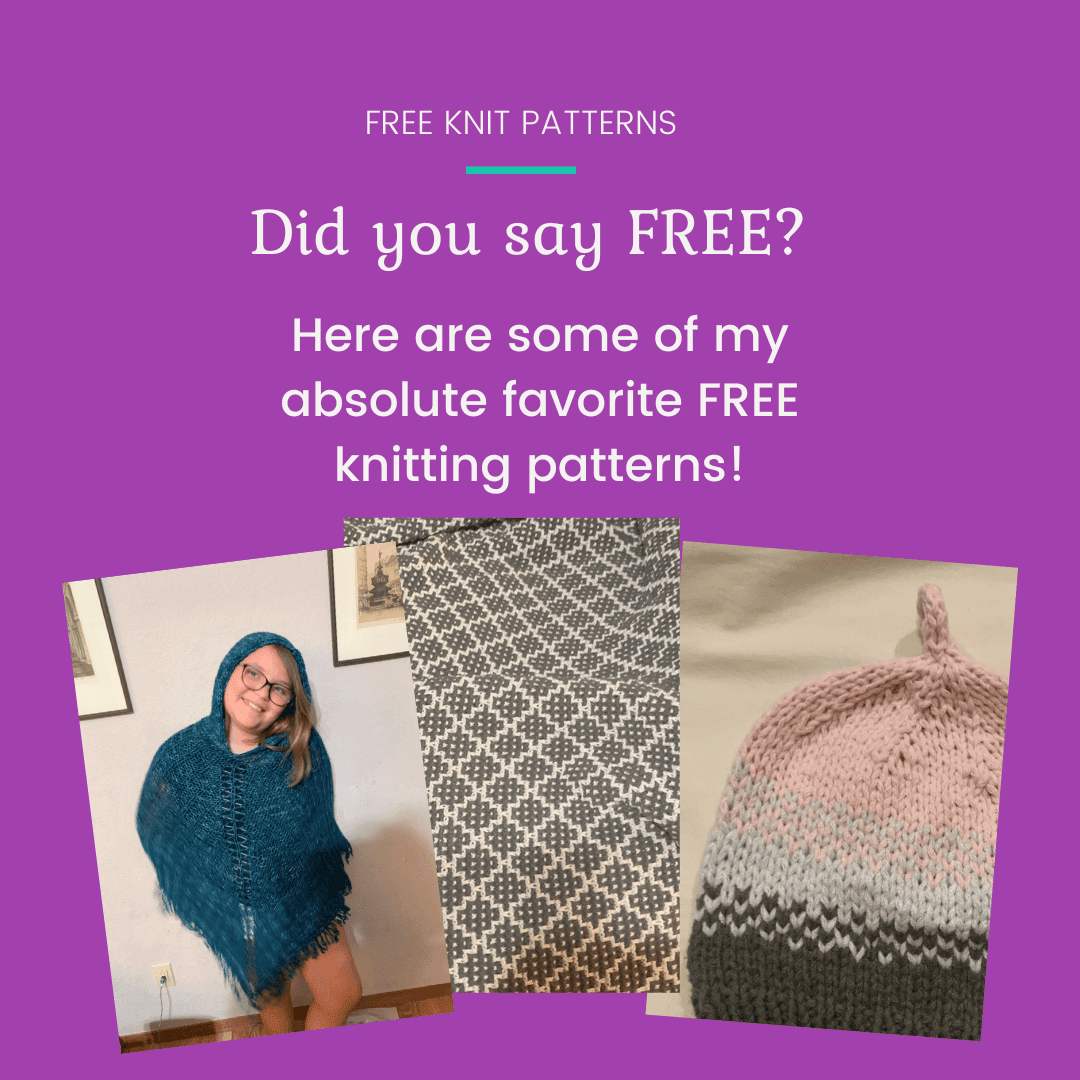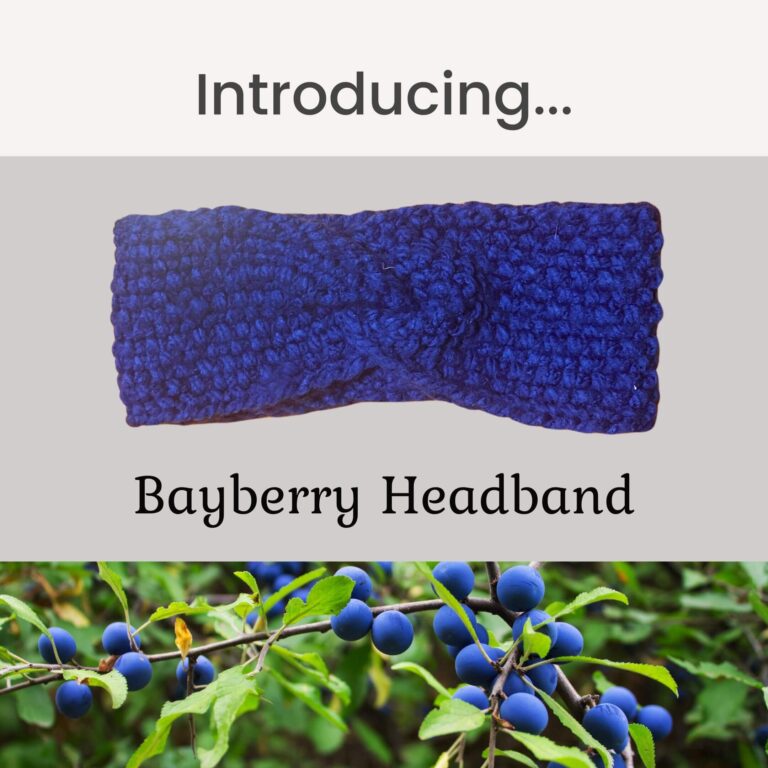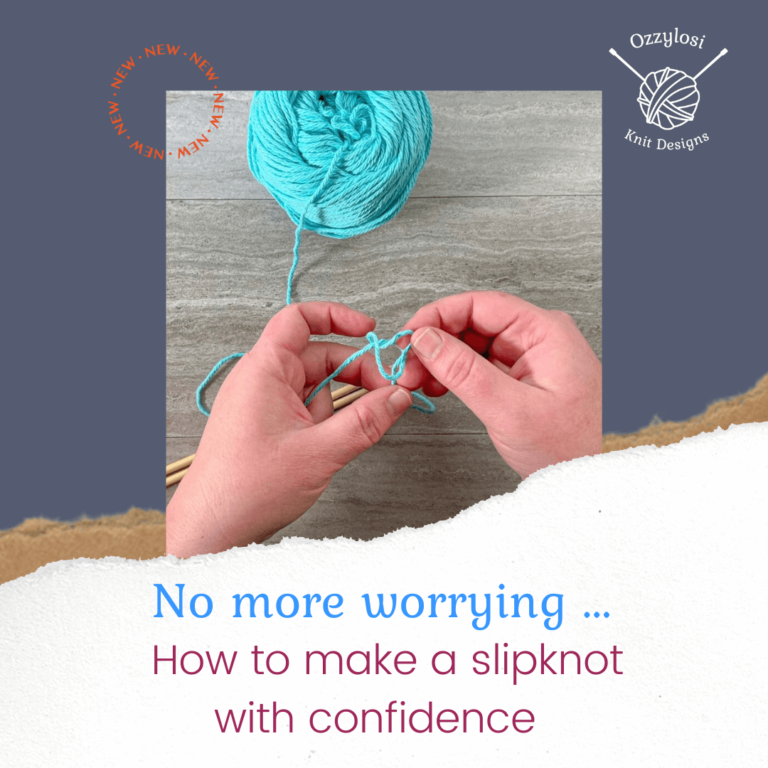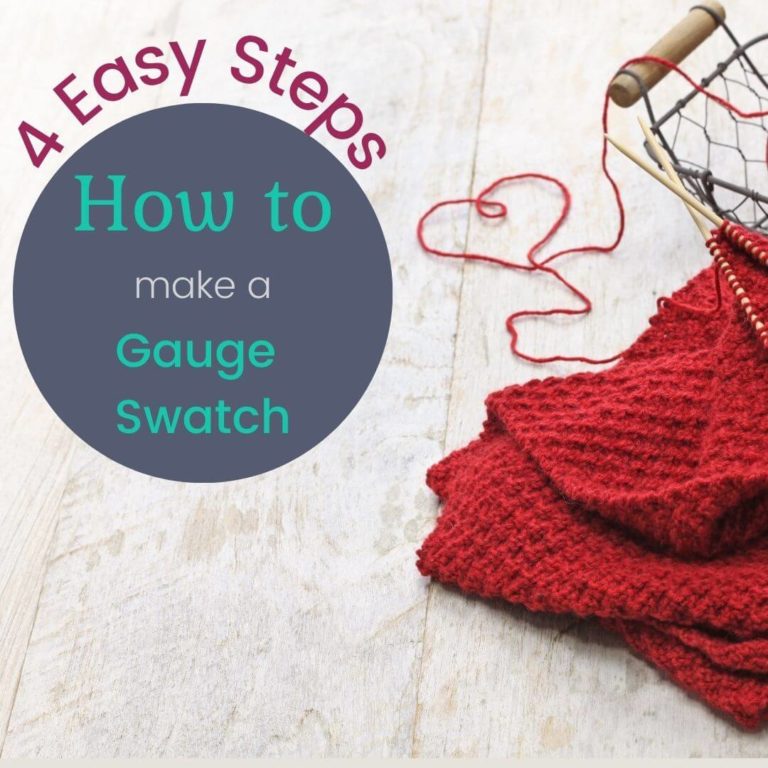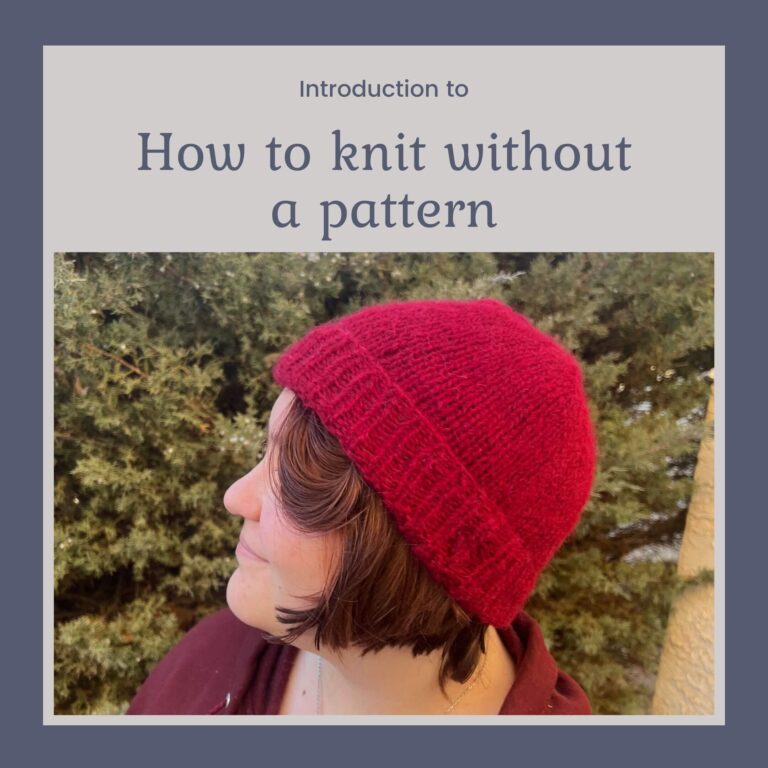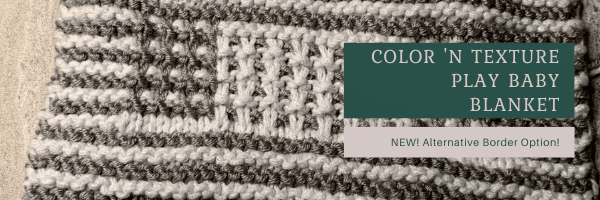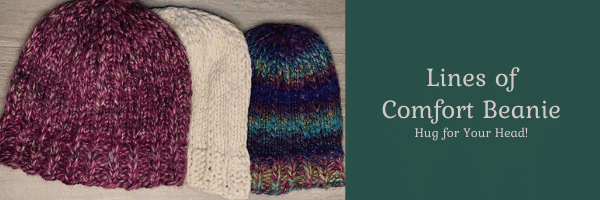Line Art Beanie Pattern Lite
The Line Art Beanie knit pattern lite is available for free, but please know that it has not tech edited or test knit. I hope to have it tech edited and test knit in the future, but I wanted to get the pattern out to you all sooner rather than later, so here we go!
To learn more about Pattern Lites, click here.
Inspiration from Crafting
One thing I do in my free time is create crafting space for our church’s youth group. I have found that it is much easier for most people, and kids are no exception, to discuss difficult things if our eyes and hands have somewhere to look and something to do. So, to create an environment for conversation and creativity I have a crafting space.
Arts and craft time is limited. I also attract a wide range of artists. From the die-hard, “I’m an Artist!” to the “I can’t even draw a straight line” teens of all sexes and ages gather around the table to do something creative. Sometimes the most creative part of this activity is me coming up with something that is eye-catching, the kids want to try, and they can take home feeling successful. There are no losers when it comes to creativity.

Anyway, one of our projects was line art. I purchased some pre-cut white cardstock bookmarks for the kids to make into art. Then I got some fine line black pens. We went to work. The beauty of line art drawing is that you aren’t drawing a thing, for example a horse or a dog. You are just making lines. Lines, polka dots, triangles, spirals, stars; whatever, it doesn’t matter at all. You are engaging in black and white space, and balancing the space as it appeals to you. Every single bookmark looked FANTASTIC. Alas, I have no pictures because I’m bad at life.
BUT it gave me the idea for this beanie.
Line Art as a beanie?!?!
The type of line art I’m talking about is taking a canvas and drawing lines. These lines divide the paper into various spaces. From there you create different patterns in each space. Wouldn’t that work for a beanie? Heck ya it would! And it is going to be awesome!
First, I gathered a number of stitch patterns that looked like dots or lines. Because each stitch pattern needs to be seen clearly and shown off, stitch pattern selection is careful. It’s a balancing act.
Next, I selected my yarn. The Plucky Knitter happened to have a “One Hit Wonder” sale not too long ago, and I scooped up 5 skeins of premium hand-dyed yarn for a fraction of the cost! I am not even sure why this magnificent yarn was in the One Hit Wonders. It is perfect (to me)! Anyway, I digress.
Finally, I decided to start with a simple 1×1 rib pattern and then go into the stitch patterns for the bulk of the knitting time of the beanie. I also wanted to make this fit more like a skull cap, since that’s what my husband likes. Some blog or website I recently read that this fall slouchy beanies will be out and skull caps will be in.
A note about the yarn selection

The yarn is The Plucky Knitter’s Haven Aran and the colorway is not listed. It’s just called “One Hit Wonder”. Haven Aran is only available during the fall and winter through The Plucky Knitter, so depending on when you knit your Line Art beanie you may have to dig into stash, or choose something else.
If it is the right time of year to scoop up some Haven Aran from The Plucky Knitter, then do yourself a favor and DO IT! This is my second time knitting with Haven Aran, and I love it. It’s so plush and soft, plus the stitches are beautifully defined.
And officially for the record I am not sponsored or affiliated in any way with The Plucky Knitter. I just love me some gorgeous hand-dyed yarns.
Stitch patterns to make up the Line Art Beanie
The fun yet difficult part… Selecting stitch patterns.
I worked out a lot of stitch patterns. I tried many different things. Some worked better than others. In the end I settled with the following stitch patterns (which may have official names, but this is what I call them):
- Seed stitch (of course)
- Column stitch
- Purl Burps
- Little Basket Weave
- Seed Paths
- Diamond purls

Now here’s a fair warning: All these different stitch patterns are made up of a different number of stitch and row repeats, and it can get super complicated knitting this beanie. Knowing how to read charts, read your knitting, and using stitch markers wherever you think they may help. This will be your life savers.
I made this pattern AND I still relied heavily on my charts, my knit reading skills and stitch markers. It’s not difficult to knit, there are just lots of stitch patterns so you gotta pay attention.
Later in this post when we get into the instructions for the Line Art Beanie I will share with you where and how I used stitch markers. I hope it will help you. Don’t take these hints or tips as “You must do it this way.”
You do you, boo. Use as many or as few stitch markers as you like!
And if you don’t know how to read your knitting yet, I’ll give you some tips on how you can use this beanie to learn. It’s a fabulous skill that will serve you well on your knitting journey. So, buckle up we’re about to start knitting!







Line Art Beanie Pattern Lite Tools and Materials
Tools
- US 7, or 4.5mm knitting needles, circular or DPN to knit in-the-round, or size required to match gauge
- US 9, or 5.5 mm knitting needles, circular or DPN to knit in-the-round, or size required to match gauge
- Scissors
- Tapestry Needle
- 1 Beginning of round (BOR) marker
- 5 stitch markers
- *Optional cable needle
- *Optional as many additional sm as you would like
Materials
63, (84, 112, 135, 167) yards/58, (77, 61, 73, 90) meters of Aran/Worsted weight yarn
Line Art Beanie Pattern Lite Gauge and Finished Sizes
Gauge
20 sts and 24 rows with larger needles in Seed stitch pattern knit in-the-round, blocked
20 sts and 26 rows with larger needles in Stockinette Stitch knit in-the-round, blocked
Finished Sizes
| Size | Head Measurement | Approx Finished Circumference | Approx Finished Height |
| Baby | 14-16 inches (35.5-40.5 cm) | 13.25 inches (33.5 cm) | 5.75 inches (14.5 cm) |
| Todler | 16-18 inches (40.5-46 cm) | 14.5 inches (36 cm) | 7 inches (18 cm) |
| Child | 18-20 inches (45.5-51 cm) | 17 inches (42 cm) | 8 inches (20.5 cm) |
| Teen/ Adult Small | 20-22 inches (51-56 cm) | 18 inches (45 cm) | 9 inches (23 cm) |
| Adult Large | 22-24 inches (56-61 cm) | 20.5 inches (51 cm) | 9.5 inches (24 cm) |
Line Art Beanie Pattern Lite Instructions
Cast-On
Using the smaller knitting needles, cable cast-on (or your preferred stretchy cast-on method) 66, (72, 84, 90, 102)
Place BOR marker, join in the round *or*
*If you want to have an invisible join in-the-round, cast-on one additional stitch. When you join in the round, you will pass the last stitch cast-on over the first stitch cast-on, purl this stitch and place your BOR marker. You can check out my YouTube Tutorial on how to do the invisible join in-the-round here.*

Band Instructions
Round 1: *K1, p1* repeat to BOR, sm
Repeat Round 1 a total of 6, (8, 10, 12, 14) times
Set-up markers RND for sizes 1, 4, 5
[*K1, p1* 5, (7, 8) times, sl next st to cable needle, k1, pm, sl st on cable needle to RH needle, *k1, p1* 5, (7, 8) times, pm] repeat [ ] 3 times,
Set-up markers RND for sizes 2, 3
*K1, p1* 6, (7) times pm* (total of 12, (14) sts worked then pm) until 12, (14) sts remain to the BOR, *k1, p1* to end of RND, sm
After you have set up your markers at the BOR, you have completed a total of 7, (9, 11, 13, 15) rounds.
Estonian Braid
If you choose NOT to knit the Estonian braid, proceed to the charted instructions. The Estonian braid will be worked behind the first knit stitch after each marker.
Estonian Braid Basic Instructions
*Transfer the last st knit to the LH needle, knit through the back loop into the second st on your LH needle, knit the transferred st as normal, let both sts drop from the needles* repeat until you reach a st marker, then refer to instruction on “To work the Estonian braid under the first st of each section.”
To work the Estonian braid under the first st of each section
Remove m, sl first st of section onto cable needle, transfer the previously knit st on LH needle, knit into the back of the second st on LH needle and k slipped st as normal, drop both sts from LH needle, transfer completed st to LH needle, place m on RH needle, slip st from cable needle onto RH needle
At BOR Instructions
At the BOR simply drop both stitches and proceed to the Line Art Section.
Line Art Beanie Charts
Please refer to the chart instructions. You may want to print the chart for the size beanie you are working and highlight the rounds as you go. Or use an electronic version of the chart. Each chart has its own access link. Click on the chart icon next to the size you are working to access the electronic version of the chart.
Please note there is no cost for you to utilize the electronic chart, this is a service that I pay for. If you need assistance with the electronic chart, please email me, lois@ozzylosiknitdesigns.com.
Written instruction will be made available in the full version of the pattern when it becomes available.
Baby Size Chart Instructions

Toddler Size Chart Instructions

Child Size Chart Instructions

Teen/Adult Small Size Chart Instructions

Adult Large Size Chart Instructions

Notes for Line Art beanie Stitch Pattern Sections
The beanie is divided into 6 equal sections. Depending on the size you have chosen to knit you may have an odd number of stitches or an even number of stitches in each section. Each chart reflects the exact number of stitches and rows for you to knit in order to finish your knitting precisely.
Each section is marked by a column of knit stitches that begins at cast-on, crosses the estonian braid (if you opted to knit one) and is the final stitches you will have on your needles when you have completed knitting. On either side of this stitch will be a column of purl stitches. Each section will begin with a knit stitch and a purl stitch, and end with a purl stitch.
If you keep that in mind, you may be able to focus your attention on each individual section and the stitch pattern that will be worked in them. It may be helpful if you have numbered or lettered stitch markers so you can keep track of each section by number or letter. If you do not have those, you will still be able to keep track as there are only six sections in total. Just be sure that your BOR marker stands out from the rest.
Below, I have included each section with tips on how to read your knitting, and how to use stitch markers to help you keep your place while knitting.
Section 1 Seed Stitch Pattern

If you are accustomed to reading your knitting, then you may simply remember that in Section One we are working Seed Stitch. This means that if your last stitch was knit, you will purl it, and if it was purled, you will knit it.
If you want to learn how to read your knitting, this is a great time! Seed stitch pattern is made up of two rounds. RND 1: K1, p1 and RND 2: P1, k1. As you can see this means that you will knit purl stitches and purl knit stitches. As you are working, pay attention to how the knit and purl stitches appear on your needles. If and when you feel comfortable, you can stop using the stitch marker and simply read your knitting for this section!
But for now grab an open/close stitch marker.
Stitch Pattern Overview
Seed Stitch pattern is made up of 2 RNDs. RND 1: K1, p1. RND 2: P1, k1. Repeat RNDs 1 & 2 all the way through crown shaping.
If you want to track your RNDs more closely …
You will need an open/close stitch marker.
Seed Stitch Round Tracking Notes
RND 1: of Seed Stitch, once you knit the first stitch of the stitch pattern, (so after the sm, after the first knit and purl st), place a removable st marker on that st. Continue to work in the established pattern following chart instructions.
RND 2: of Seed Stitch, remove the st marker and purl that st. Continue to work in the established pattern following chart instruction.
Section 2 Column Stitch

If you are accustomed to reading your knitting, then remember that you will work a column of 6 knits and 6 purls. Then you will knit the purls and purl the knits and begin another column of six RNDs.
Stitch Pattern Overview:
Column Stitch pattern is made up of 12 rounds. For RNDs 1-6 you will K1, p1. For RNDs 7-12 you will P1, k1. This subtle shift between knit and purl columns creates a shifting rib pattern.
If you want to track your RNDs more closely …
To help you keep track you will need an open/close stitch marker.
Column stitch Round Tracking Notes
RND 1: Column Stitch-on your first knit stitch of Column Stitch (not counting the column of knit and purl after the stitch marker, but the first stitch after that) place a stitch marker on that knit stitch. Continue working in the established pattern following the chart instructions.
RND 3-6: Continue knitting the knits and purling the purls as instructed in the chart. Once you have a column of six knit RNDs (which you can count from your stitch marker as it marks RND 1), you will begin a NEW column of six RNDs by knitting your purls and purling your knits.
RND 7: Column Stitch, on your first knit stitch of Column stitch (following chart instructions), place a stitch marker on that knit stitch. Continue working in the established pattern following the chart instructions.
RND 8-12: Continue knitting the knits and purling the purls as instructed in the chart. Once you have a column of six knit RNDs (which you can count from your stitch marker, as it marks RND 1), you will begin a NEW column of six RNDs by knitting your purls and purling your knits.
Section 3 Little Basket Weave

If you are accustomed to reading your knitting then you may remember that you will work two rounds of stockinette stitch and then two rounds of stockinette stitch that has a sprinkling of purl stitches in groups of two, separated by two knit stitches. Each time you work a purl cluster, it will be in between the last purl clusters below on your needles. In keeping track this way, you will not need to refer to your instructions, but rather maintain the established pattern set in the first 3 RNDs.
Stitch Pattern Overview
Little Basket Weave stitch pattern is made up of 8 rounds. RNDs 1&2 will have purl stitches, RNDs 3&4 stockinette stitch, RNDs 5&6 will have offset purl stitches from RND 1&2, RNDs 7&8 will be stockinette stitch.
Please note: The very first RND of the section is not a part of the stitch pattern but a set up for the stitch pattern. It is not counted in the stitch pattern notes above.
If you want to track your RNDs more closely …
To help you keep track, you will need an open/close stitch marker.
Little basket weave Round Tracking Notes
RND 1 of Little Basket Weave (see note above), on your first purl stitch of the stitch pattern (not counting the column of knit and purl after the stitch marker, but the first purl stitch after that) place a stitch marker on that purl stitch. Continue working in the established pattern following chart instructions.
RND 3 of Little Basket Weave (see note above), on the first knit stitch, remove the stitch marker from the purl stitch from RNDs worked below, and place it on this newly made knit stitch. Continue working in the established pattern following chart instructions.
RND 5 of Little Basket Weave (see note above), on the first purl stitch, remove the stitch marker from the knit stitch from the RNDs worked below, and place it on this newly made purl stitch. Continue working in the established pattern following chart instructions.
RND 7 of Little Basket Weave (see note above), repeat RND 3 instructions.
Section 4 Purl Burps

If you are accustomed to reading your knitting, we are working reverse stockinette stitch with little “burps along the way”. The pattern is RND 1 *p* and RND 2: *P2, k1* (refer to chart for detailed instruction based on the size you are knitting). The “burps” are worked in vertical columns so once the first burp is placed you will continue to place them in the same line all the way to crown shaping.
Stitch Pattern Overview
Purl Burps stitch pattern is made up of 2 rounds. RND 1 is all purls. RND 2 is made up of 2 purls with a knit stitch. Refer to your chart for detailed instruction based on the size you are knitting.
If you want to track your RNDs more closely …
To help you keep track, you will need an open/close stitch marker.
Purl Burp Round Tracking Notes
RND 2 of Purl Burps, on the first knit stitch, place a removable stitch marker on this stitch. Continue working in the established pattern following the chart instructions.
RND 1 of Purl Burps, purl all stitches and remove the stitch marker off the knit stitch from the previous RND.
Section 5 Seed Paths

If you are accustomed to reading your knitting, we are working in a slanting seed stitch that uses three knit stitches to separate the paths. Each “seed path” is made up of a p1, k1, p1, k1, p1, followed by 3 knit stitches and then a p1, k1, p1, k1, p1. The path moves each RND shifting the seeds one stitch to the right. Once you establish this pattern it is easy to look at where your paths were on the previous round and shift your stitches accordingly.
Stitch Pattern Overview
Seed Paths stitch pattern is made up of 8 rounds. Each RND will have sections containing 3 purl stitches separated by a knit stitch, then a cluster of 3 knit stitches in succession. Refer to your chart for detailed instruction based on the size you are knitting.
If you want to track your RNDs more closely …
To help you keep track, you will need an open/close stitch marker.
Note: The stitch marker once placed will be moved one stitch closer to the section beginning.
Seed Path Round Tracking Notes
RND 1 Seed Paths, P1, k1, p1, k1, p1, k3, pm. Continue working in the established pattern following the chart instructions.
RND 2 Seed Path, remove marker, K1, p1, k1, p1, k3, pm. Continue working in the established pattern following the chart instructions.
RND 3 Seed Path: P1, k1, p1, k3, move stitch marker to this new location. Continue working in the established pattern following the chart instructions.
RND 4 Seed Path: K1, p1, k3, move stitch marker to this new location. Continue working in the established pattern following the chart instructions.
RND 5 Seed Path: P1, k3, move stitch marker to this new location. Continue working in the established pattern following the chart instructions.
RND 6 Seed Path: K3, move stitch marker to this new location. Continue working in the established pattern following the chart instructions.
RND 7 Seed Path: K2, move stitch marker to thi new location. Continue working in the established pattern following the chart instructions.
RND 8 Seed Path: K1, move stitch marker to this new location. Continue working in the established pattern following the chart instructions.
Section 6 Diamonds

If you are accustomed to reading your knitting, Each chart has it’s own individual instructions for the diamond pattern based on the number of stitches in the section. Please refer to the chart instructions to help you establish a pattern that makes it easy for you to read. For reference, working a number of RNDs to establish this pattern and then referring to your previously worked RNDs as you continue to knit in the established RNDs.
Stitch Pattern Overview
Unlike the previous stitch pattern used, the Diamond section is designed particular to the hat size you are knitting. Each design is made to highlight the diamond pattern and best emphasize its look. Refer to your chart for detailed instruction based on the size you are knitting.
If you want to track your RNDs more closely …
To help you keep track you may choose to use one or several stitch markers.
Work the first RND of the Diamond pattern placing stitch markers where you think they may be most helpful. In the following RNDs adjust to see if there are placements that will be more helpful.
Some suggested placements would be to place them at the purl stitches and move them according to the moving pattern.
Alternatively, you may wish to place them at the center of each diamond to help you keep track of where the centers are. In diamond patterns that have a cluster of 4 purl stitches making up the center of the diamonds you may place your stitch marker in the middle of those clusters.
Line Art Beanie Crown Shaping

Again, you may print the chart and highlight rows as you go, or you may choose to use the electronic chart and track that way. I am not so great at tracking that way, and so I offer an alternative.
I kept track of my rows by counting my “Column Stitch” sections. I referred to my chart and saw how many repeats of the Column Stitch repeats I had, and then was able to determine when to move to the crown shaping portion of the chart based on that.
If you are not confident in your knitting reading, and need to track your decrease RNDs, then I recommend placing an open/close stitch marker on the first decrease stitch that you make, or place a stitch marker on each of the decrease stitches in the round. On the following round, when you are not decreasing, remove the stitch markers so that you know the next time around you are working decrease rounds.
This pattern uses Center Double Decreases (CDD), which uses the stitch before and after our column of knit stitches that divide our sections. That means for the first section you will be taking a stitch from the “previous round” to decrease. Follow chart instruction and remember to slip the last purl stitch of the last section in the round BEFORE you work your decrease stitches.
Center Double Decrease
The Center Double Decrease (CDD) is a way to decrease by two stitches and maintain the column of knit stitches that we have maintained since cast-on. You can follow these instructions to work the CDD.
On our needles we have a purl stitch, stitch marker, knit stitch, purl stitch.
Step 1. Slip purlwise the purl stitch
Step 2. Temporarily remove the stitch marker
Step 3. Transfer the purl stitch back to your LH needle
Step 4. Slip the first two stitches knitwise
Step 5. Knit the third stitch
Step 6. Pass the two slipped stitches together over the knit stitch
Step 7. Transfer the decrease stitch back to your LH needle
Step 8. Place your stitch marker on your RH needle
Step 9. Transfer the decrease stitch to your RH needle
While it may seem like a lot of steps to remember it will be easy to find a rhythm. Just remember you want to keep that stitch marker on the RIGHT SIDE of the column of knit stitches. So even if you drop your stitch marker, or place it in the wrong place, you can easily find where it goes by looking for the column of knit stitches.
Line Art Beanie Finishing Instructions
Once you have 6 sts remaining on your needles, cut an approximate 8 inch tail. Place the tail on a tapestry needle and weave through the live stitches on your knitting needles. Remove your knitting needles and close the hat. Weave in all ends. Block as desired.
Line Art Beanie Fit Recommendations
My husband’s head measures 20 inches. Well that leads me to make a decision… I can either make a size Teen or an Adult small as both fit a size 20 inch head. Since I know he likes the skull cap fit I knit the smaller size – and he loves it! Of course my daughter is a slouchy beanie type gal. So, I went up a size for her. That gives her the fit she likes.
Remember that all heads are shaped differently and fit is also a preference. The most important part is that we knit hats that the people we love will wear and enjoy. Some may prefer snug, others loose. The joy of knitting is that it is easy for us to knit up or down a size based on the pattern information and the wearer’s preference.
I hope you enjoyed this pattern lite. It has been so fun for me to make. I am working on putting this into true pattern format and once that is tech edited and test knit you will have the ability to choose to purchase the pattern or work from these free instructions.
Did you knit the Line Art Beanie?
Be sure to leave me a comment below, tag me on IG @ozzylosiknits #lineartbeanie And link to my pattern in Ravelry!
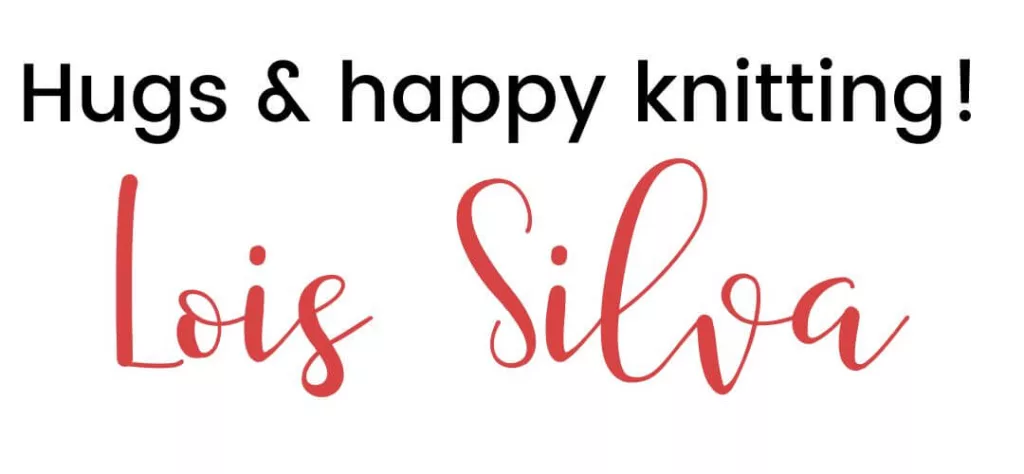
Enjoy this content? Here are some more like it!
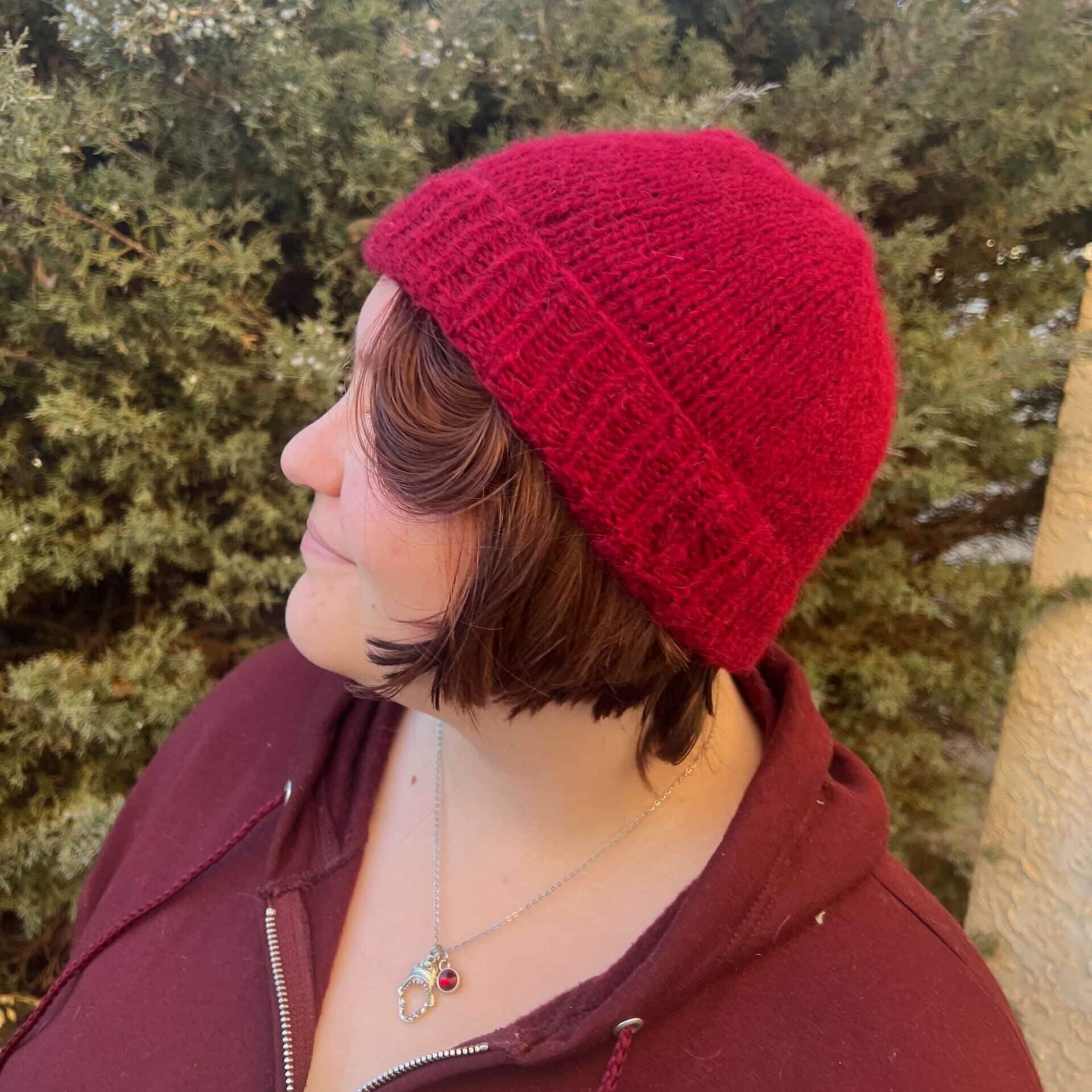
Simple Folded Brim Beanie
The Simple Folded Brim Beanie pattern lite is a knitting pattern featuring a folded brim. The majority of the hat is knit in stockinette stitch with a dramatic close to mimic commercial knit hats. Read more …
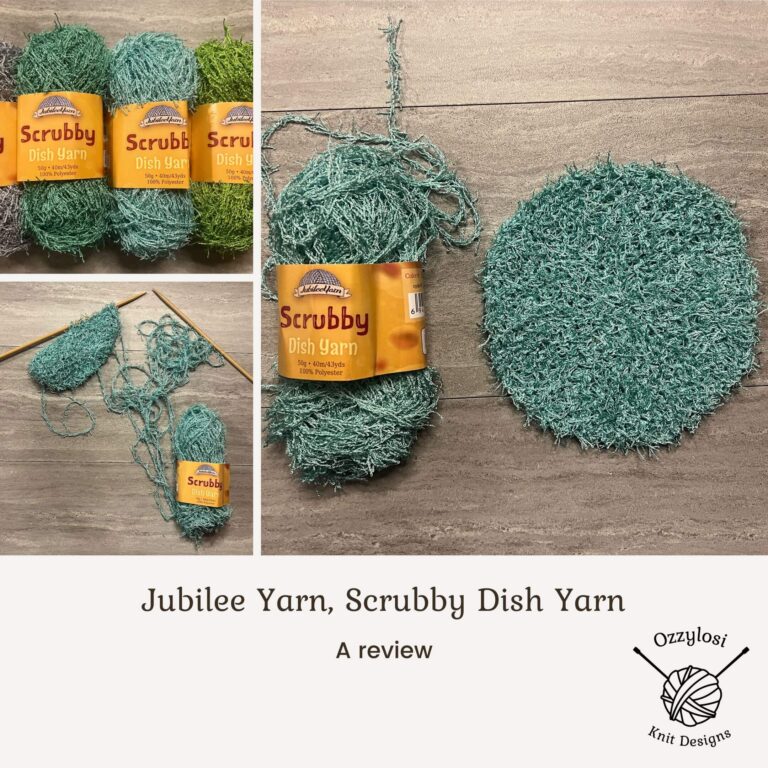
Jubilee Scrubby Dish Yarn Review
Wondering about Jubilee Yarn’s Scrubby Dish Yarn, check out my review and see if it’s right for you!
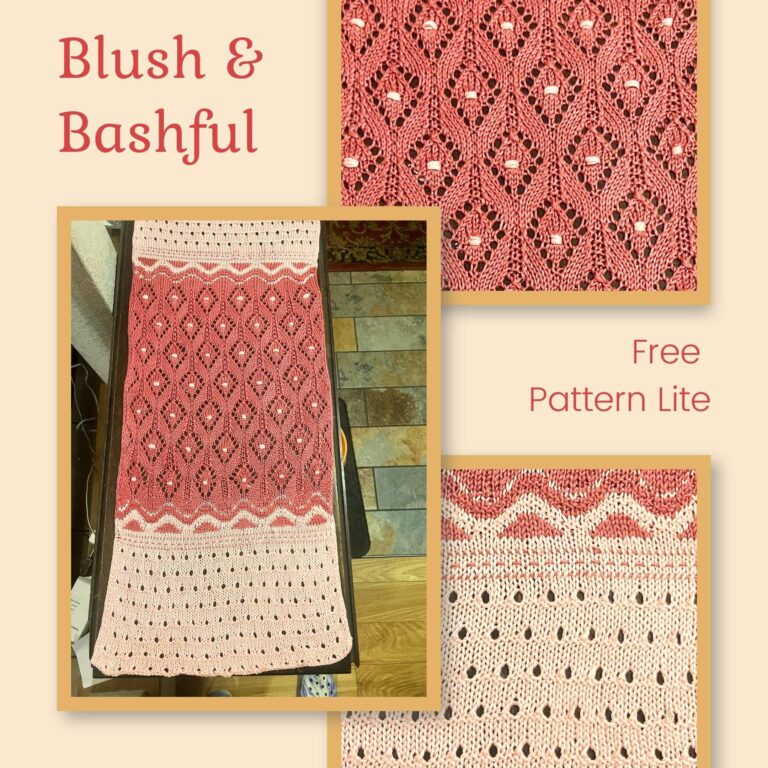
Knit Table Runner Free Pattern Lite: Blush and Bashful
The Blush and Bashful Knit Table Runner Free Pattern Lite is available for free. Includes written and charted instructions
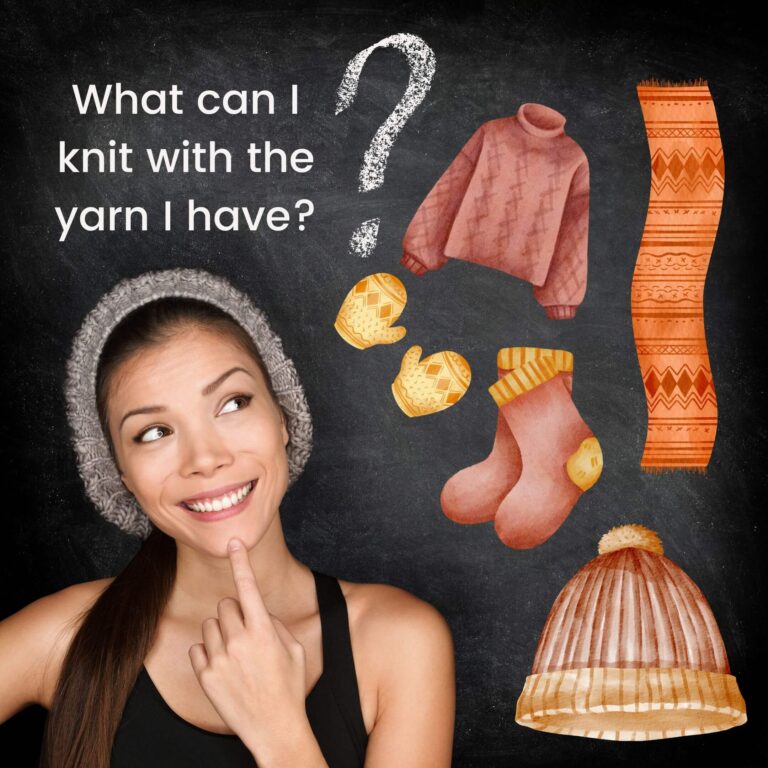
Part 2 – How to knit without a pattern What can I knit with the yarn I have?
There are more things to consider when knitting without a pattern. We are going to take a look at some questions you may want to ask yourself as you begin planning to knit without a pattern.
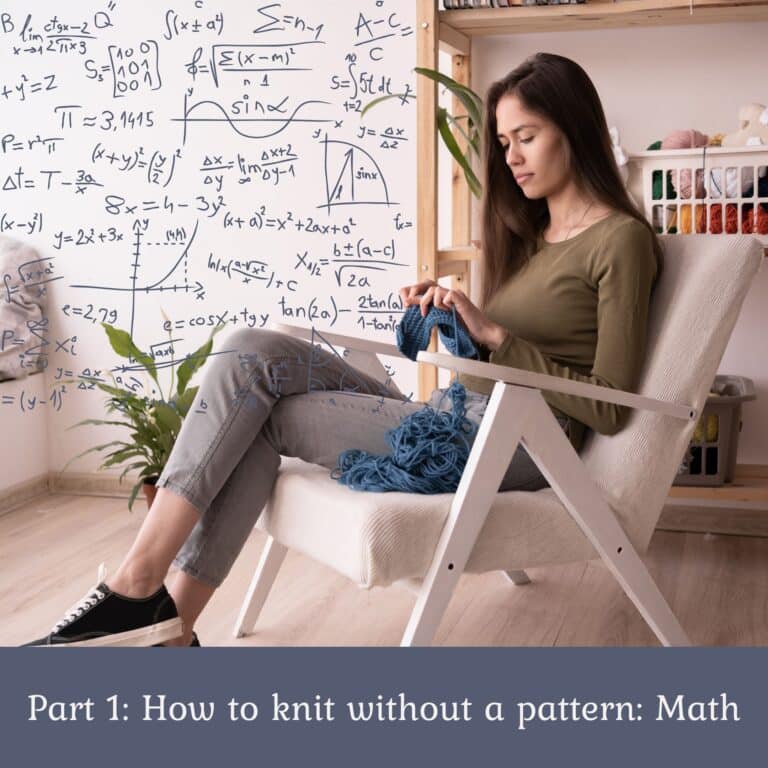
Part 1 of How to knit without a pattern: Math
Are you ready to knit without a pattern? Good news! You can learn to knit by knitting without a pattern. In this blog post we will take a look at the math needed to cast-on and knit without a pattern.
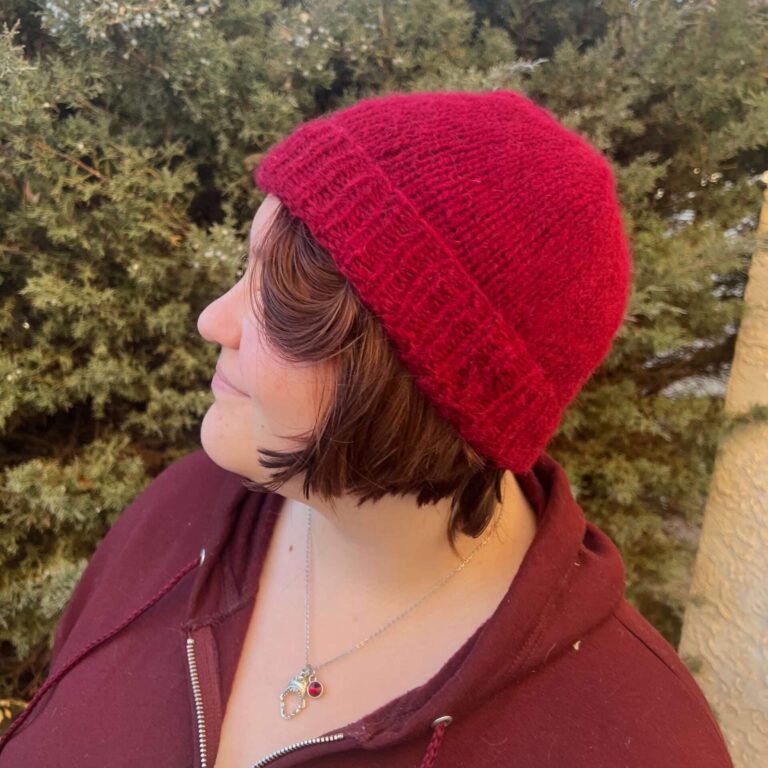
Free Knit Pattern Lite (like a knit pattern, but NOT a knit pattern)
Hello friend! In the section below are links to knit pattern lites that are like knit patterns, but are not knit patterns. So, what I mean by that, is these are items you can make from a simple pattern. BUT no one has tech edited or test knit these knit tutorials.
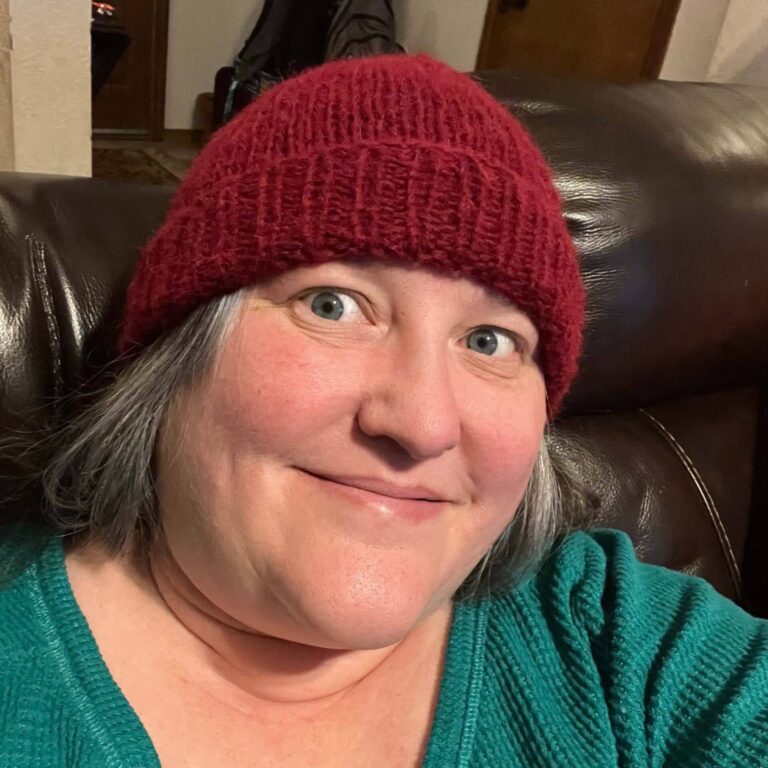
Simple folded brim beanie knit pattern lite
The Simple folded brim beanie knit pattern is a pattern you can use for free, but please know that it was not tech edited or test knit. It’s just a simple folded brim beanie knit pattern, it’s quick and easy to knit. Enjoy!
